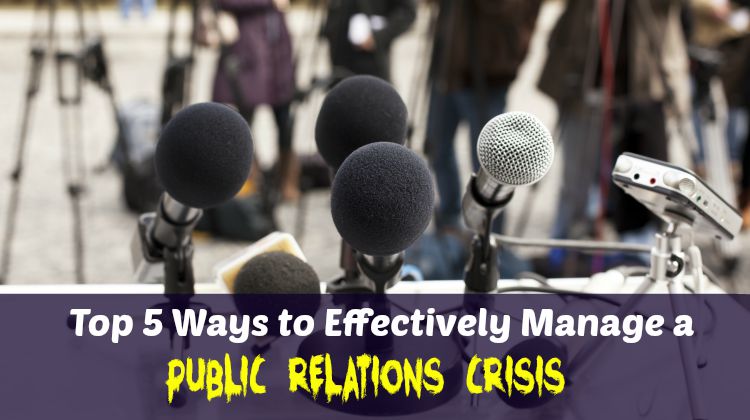
Many of us are fascinated by the characters in television programs tasked with solving a crisis or protecting a reputation. Think Olivia Pope from “Scandal” or Eli Gold from “The Good Wife.” Some do it well; others, not so much. In real life, you want a crisis manager who can handle a sticky situation.
Here are the top 5 tips for managing a public relations crisis effectively.
1. Be Calm
Before all else, you absolutely must be calm — no matter how catastrophic the situation. Tranquility allows you to focus and maintain control of the circumstances. The alternative – panic — leaves you vulnerable. When you lose control, the crisis ends up controlling you.
2. Be Proactive
The best time to do damage control is before damage happens. You need to start corrections at the first sign of trouble. Not tomorrow, next week, next year, or when a negative story breaks in the media.
Rarely is someone blindsided by crisis. Most often, he or she has some indication of potential trouble, but chose to ignore the signs, foolishly hoping the situation would right itself. It rarely does.
3. Be Realistic
While you may wish to bury your head in the sand, the media is unlikely to bury a potentially juicy story. That means you may have to tell your story and tell it before your detractors speak out. If you don’t, the other side will.
Tell your story on your terms. Selective truth-telling works, but only if you’re credible. The public is usually forgiving of human weakness, but only the most skillful and charismatic can recover from a lie.
4. Be Creative
What worked in one situation won’t necessarily work in the next. Each crisis is different – involving different people, different issues, and different times. If you are seeking a cookie-cutter solution to every public relations crisis, you will be disappointed. You have to be creative. Ask yourself, “Will doing this achieve my goal?” If it won’t, don’t do it.
5. Pivot
If something can go wrong, it will. Always anticipate and plan for the worst. That way, you will be more prepared and better able to switch strategies when your first goes awry. Once you are in the media spotlight, you won’t get a do-over. Unlike television, in real life there is no Take Two.
About the Author
Eden Gillott Bowe, President of Gillott Communications LLC, has nearly a decade of Crisis PR expertise, resolving issues both in and outside the media’s glare from celebrity scandals and corporate fraud to criminal and civil litigation. Educated in business and communications on three continents, Eden has worked in Seoul, Manhattan, and Los Angeles as a crisis manager and business professor. She is co-author of “A Lawyer’s Guide to Crisis PR” (2014) and the upcoming “A Board Member’s Guide to Crisis PR” (2016).